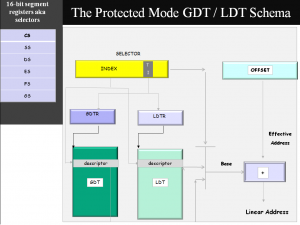We all know, presumably, that MOV CR3 (the PDBR) is an essential part of the Linux Kernel’s context_switch routing. This is necessary, since the tables may have switched, but the MOV CR3 also flushes the TLB thereby forcing Page Table Walks.
Avoiding TLB flushes on Loads of CR3 are key to avoiding performace hits on context switches. In other words, a processor really needs to facilitate the storage of address space caching in the TLB across context switches.
In “pure architectures” (which the x86 is NOT, and for good reason of backward compatibility etc), the PID (Process ID) would have been “hashed” with TLB addressing, thereby avoiding the need for TLB Flushes on context switches. Not so with x86, since the PID is not part/parcel of the x86 Architecture.
Process-context identifiers (PCIDs) are a facility in x86 by which a logical processor may cache information for multiple linear-address spaces in the TLB, and preserve it across context switches.
As we noted above, The processor retains cached Page-Table information when software switches to a different linear-address space by loading CR3, and presumable to a different Process (We ARE executing a context_switch)
With the x86, my dear brothers and sisters in grief and joy, we take what you can get, and run. In this case, where TLB flushes are avoided for what will turn out to be 99% of the *current* address space, that is more than we can bargain for with Intel. I say.. Good Job Intel.


Recent Comments